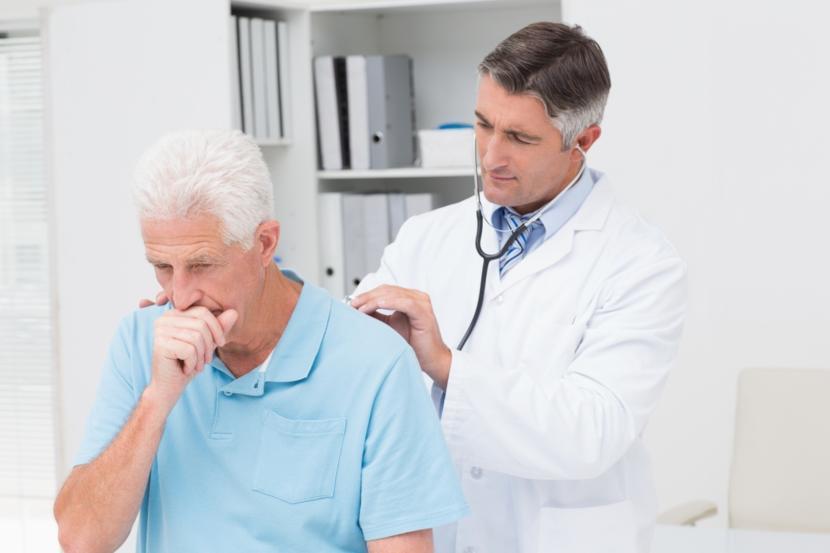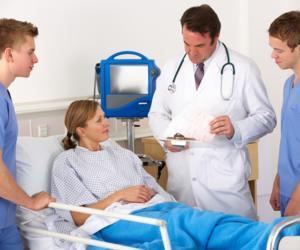Pulmonary Tuberculosis: A Disease That Might Spread Beyond the Lungs

What is pulmonary tuberculosis?
Pulmonary tuberculosis or (TB) indicates a contagious bacterial infection involving the lungs but can also spread to various parts of the human body.
What are the symptoms of pulmonary tuberculosis?
People suffering from this lung condition would commonly experience the following:
- A consistent cough during the day
- Coughing up blood
- Consistent fever along with low-grade fever
- Nighttime sweating
- Chest pain
- Unexplained weight loss
Aside from the above-mentioned symptoms, patients with pulmonary tuberculosis may also experience other symptoms, such as tiredness and fatigue. In such situation, the doctor will review each of the symptoms to come up with a proper diagnosis.
What causes pulmonary tuberculosis?
Mycobacterium tuberculosis is the primary bacterium that causes pulmonary tuberculosis. It is contagious in nature, which means that anyone can be quickly infected by an infectious person. People would get infected with pulmonary tuberculosis when they breathe in air droplets from a sneeze or a cough of an infectious person. The resulting infection in the lungs is called as primary TB.
A majority of people tend to recover from the primary infection without any other problems or further evidence of the lung disease. The infection may remain in the dormant or inactive state for many years. However, the disease can also reactivate in some people.
Risks Involved in Pulmonary Tuberculosis
Many people who develop TB-related symptoms have past infections. In a few cases, problems occur within a few weeks after being infected with primary TB. The following people remain at very high risk of having a tuberculosis reactivation:
- Infants
- Older adults
- Individuals who have weak immune systems such as those who have AIDS, diabetes, and those undergoing chemotherapy
- Patients who take medications that weaken their immune system
In addition, the risk related to catching tuberculosis would increase if a person:
- Lives around people who have pulmonary TB (especially when traveling overseas)
- Lives in a polluted or crowded living condition
- Has poor nutrition
Is pulmonary tuberculosis curable?
The most common question most patients usually ask about pulmonary tuberculosis if it is curable or not. Pulmonary tuberculosis can be treated if patients follow proper medications and take necessary precautions according to the instructions given by their doctor.
Taking Medications for a Long Time is Essential
If you are diagnosed with pulmonary tuberculosis, your doctor would certainly prescribe you a number of medicines. You have to take such drugs for a period of six months or even a longer time to get the best results.
The common medications for TB are:
- Pyrazinamide
- Isoniazid
- Ethambutol
- Rifampin
Directly Observed Therapy
Along with medications, doctors may recommend another treatment approach, which is called directly observed therapy or simply DOT. The main objective of this therapy is to make sure that the patient's recommended treatment is completed.
Why is DOT essential?
Skipping doses or stopping one's treatment may make the bacteria that cause the disease more resistant to the medicine resulting in a multidrug-resistant problem. Thus, with DOT treatment, doctors and other healthcare professionals meet with the patients daily or about 4 to 5 times a week to administer the medication. Due to this treatment system, patients will no longer have a hard time in diligently taking the medicines on their own.
Tips to Remember About Taking Medicines
If you have not opted for the DOT treatment, you should prepare a schedule to consume your medicines to avoid missing any dose. For this reason, you have to follow a few important tips and keep them in mind when taking your medicines:
- Take your medicines daily at the same time.
- Create a daily note on a calendar about every medicine you take.
- Ask your friend, roommate, life partner, or another person to remind you about taking your medicines daily.
- Always ensure to keep your medicines inside a suitable pill organizer.
Is tuberculosis infectious?
Pulmonary tuberculosis takes place in the lungs and is contagious in nature. It spreads at the time when an individual suffering from active tuberculosis breathes out the air droplets that contain the TB bacteria and another person breathes in the same TB bacteria from the air. Infected people release more bacteria when they laugh or cough. However, an extrapulmonary type of tuberculosis does not easily spread to other people.
Certain people are likely to get infected by pulmonary tuberculosis than others. They include:
- People who have AIDS or another similar type of illness that makes the immune system weak.
- People who have close contact with other individuals who have an active TB infection, such as living in a house with a TB-infected person.
- Nurses and healthcare professionals taking care of patients who are suffering from an active tuberculosis disease.
- People who work or live in crowded places, such as nursing homes, prisons, and homeless shelters, wherein people may suffer from an active TB.
- People who abuse alcohol or drugs.
- Migrant farm workers and homeless people, who have poor access to healthcare facilities.
How to Prevent the Spread of a Pulmonary TB Infection
Once the doctor confirms his or her diagnosis that you have pulmonary TB, you immediately become contagious for a period of about 2 to 3 weeks into the course of your treatment. However, the diagnosis never implies that you have to stay isolated at this time. Instead, you should take a few basic precautions to put a halt on spreading the TB infection to your friends and family members. You have to:
- Always keep your mouth covered preferably by using a disposable tissue at the time when you sneeze, cough, or laugh.
- Skip school, work, or any type of social activity unless your doctor advises you to go back to your normal daily routine schedule.
- Carefully dispose of each used tissue inside a sealed plastic bag.
- You should open the windows to allow the entry of fresh air in the areas where you usually spend most of your time.
- Avoid sleeping in a room with other people (life partner, roommates, friends, parents, and children) as you may sneeze or cough during your sleep without realizing it.













